Sat, 24 Jan 2015 . Last updated Thu, 25 Jun 2015 09:00
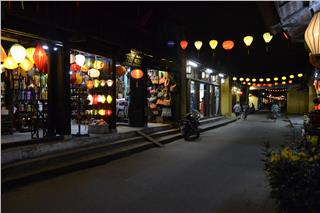
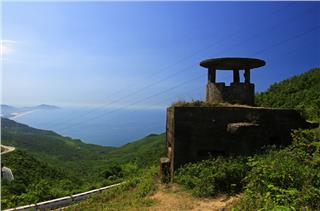
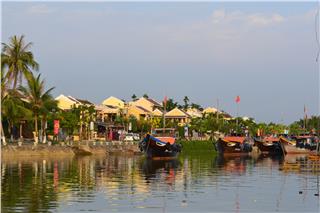
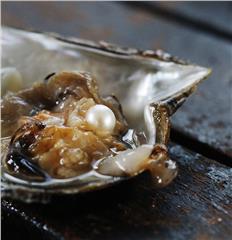
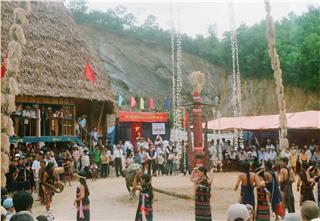
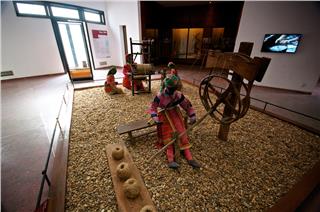

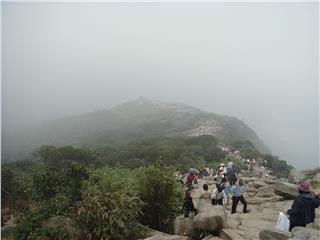
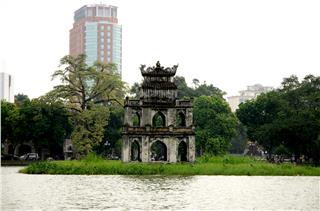
For over 700 years of existence, Quoc Tu Giam (Imperial Academy) trained thousands of talents for Vietnam. It is the first university in the country. At present, Van Mieu – Quoc Tu Giam is one of the most typical historical and cultural relics of Hanoi and the whole country.
In 1010, King Ly Thai To removed the capital from Hoa Lu to Dai La, establishing the famous Thang Long capital. The biggest goal then was to protect and reinforce the national independence. So an ideological basis, an effective social structure and a string educational system for training talents for the country were needed. On the basis of the thought “tam giao dong ton”, the Ly dynasty selected the three pillars to build the country, namely Confucian Society, Buddhist Spiritual Life and Way of Nature.
Dai Viet Su Ky Toan Thu (Complete Annals of Dai Viet) records “In the autumn of the year Canh Tuat, the second year of Than Vu (1070), in the 8th lunar month, during the reign of King Ly Thanh Tong, Van Mieu (Temple of Literature) was built. The statues of Confucius, his four best disciples: Yan Hui (Nhan Uyen), Zengzi (Tang Sam). Zisi (Tu Tu), and Mencius (Manh Tu), as well as the Duke of Zhou (Chu Cong), were carved. They are worshipped all year round. The Crown Prince studied here.”
So, Van Mieu, apart from serving as a place of worship, was also a royal school and the first student was the Crown Prince Ly Can Duc, the son of King Le Thanh Tong and Nguyen Phi Y Lan, who was then 5 years old. In 1072, Ly Can Duc ascended the throne and became King Ly Nhan Tong. In 1076, King Ly Nhan Tong had Quoc Tu Giam built next to Van Mieu. Students of the university were children of royal members and literature mandarins.
In the Tran dynasty, the third year of Nguyen Phong (1253), King Tran Thai Tong turned Quoc Tu Giam into Quoc Hoc Vien. The school also taught children of civilians who got excellent results in their studies. The school was known as a school rather than a place of worship. It can be said that, after the capital was removed to Thang Long, the construction of Van Mieu – Quoc Tu Giam was considered the second major cultural and historical event in the 11th century. This shows the policy of building and reinforcing a centralized state using intellectual mandarins and Confucianism as the official ideology for governing the country.
The architecture of Van Mieu is typical of that of the Nguyen dynasty. It is surrounded by 4 walls which were built of grey wooden-hammer bricks – a product of the Post-Le dynasty. For many centuries, Van Mieu was the holy land of Confucianism. The gate of Van Mieu bears many original features of Vietnamese ancient architecture. The first space is called “Nhap dao” with 3 roads.
The main middle road is called Hoang Dao. Earlier, it was reserved for kings, royal members and high-ranked mandarins. And the remaining roads are called Linh dao for students and civilians. The road leads into Dai Trung Mon. The vase on its top shows old people’s desire to catch the most quintessential things of the universe. And the two carp with their heads down symbolize students’ desire to pass examinations. Dai Trung Mon is flanked by Thanh Duc and Dat Tai. The value of the target of training talented and normal people remains unchanged.
Khue Van Cac is small and has a simple architectural style. It is surrounded by green ancient trees and located next to Thien Quang well. Thien Quang well is also known as Van Tri. When naming the well Thien Quang, perhaps old people wanted to receive the quintessence of the universe and acquire knowledge. In addition, the well is square, which symbolizes the ground, and the windows on Khue Van Cac are round, which symbolizes the sky.
All quintessential things of the sky and the ground converge on Van Mieu – Quoc Tu Giam in Thang Long. Thus, Khue Van Cac has become the symbol of Hanoi capital. Khue Van Cac is flanked by two small gates. “Bi Van” gate is on the left, referring to a refined and convincing style of writing. “Suc Van” gate on the right side refers to concise and enriched literature.
Thien Quang well is flanked by 82 doctorate steles which are divided into 2 rows, each row consist of 41 steles. All steles face the well. They are considered relics which have the highest value in Van Mieu – Quoc Tu Giam.
Passing Dai Thanh gate, we reach the main area of Van Mieu – Quoc Tu Gam. On the top of the gate, there is a horizontal lacquered board with 3 words “Dai Thanh Mon” on it. Two lines of smaller characters “Ly Thanh Tong, Than Vu nhi nien, Canh Tuat Thu, bat nguyet phung kien are inscribed on the two sides of the board, like what are recorded in historical documents: In autumn, the year of Canh Tuat, the second year of Than Vu (1070), in the 8th lunar month, during the reign of King Ly Thanh Tong, Van Mieu (Temple of Literature) was built”.
Dai Thanh gate (gate of great achievement) leads into the area of main architectural works where Confucius, his four best disciples and Chu Cong are worshipped. And the final destination is Quoc Tu Giam the university where many talents for Vietnamese feudal courts such as Nguyen Truc, Ngo Si Lien, Nguyen Trai, Mac Dinh Chi, Luong The Vinh, Ngo Thi Nham and so on were trained. The Thai Hoc courtyard was built on the foundation of the old Quoc Tu Giam. This place is where Chu Van An, the first Confucian scholar of Vietnam to be worshipped in Van Mieu, is worshiped. Chu Van An was not only the teacher of the Crown Prince but also a typical educator who made a great contribution to the educational cause of the nation.
The establishment of Van Mieu in 1070 and Quoc Tu Giam in 1076 was not only a step forward in terms of culture and education but also had great historical values. In the context when the country just gained independence after being dominated for more than 1,000 years, all political, economic, military and cultural activities were aimed at showing national sovereignty. In 938, Dinh Bo Linh became the King of the country. In 1010, Ly Cong Uan moved the capital to Thang Long.
In 1076, before the foreign invaders, Ly Thuong Kiet read the poem “Nam Quoc Son Ha” on the Nhu Nguyet River. The establishment of Van Mieu – Quoc Tu Giam was to train mandarins to control the country and train talents for the country. The stele which was compiled by Dong Cac Hoc Sy Than Nhan Trung in 1442 is considered the declaration of the country’s education: “Excellent talents with good virtue are the sap of the country. If the sap is strong, the country will be strong and progress. If the sap is weak, the country will be weakened and degraded. For that reason, there is no clear-sighted king who is not concerned about building and developing talents.”
The 82 steles are extremely valuable objects which help us get a better insight into the history of Vietnam’s education in a period of time of more than 300 years. Through the stele, we can understand Vietnamese feudal courts’ policies of encouraging students to study, training talents and commending students who got high results in examinations. The first stele to be erected in 1442 says “The stele is inscribed with the names of and other information about those who had got high results in the examinations for others to follow”.
The stele which was erected in 1739 says “The stele is inscribed with the names of and other information about those who had got high results in the examination so that their fame lasts forever”. Apart from, commending excellent students, the erection of the steles was also aimed at encouraging people to do right things and preventing evil things from happening. For instance, the stele which was erected in 1478 reads “If any mandarins do not care about national affairs and seek benefits for themselves, they will have their names criticized and disapproved of. The erection of the steles is an evidence for the old kings’ desire to honor and take care of talents. ”
For over 1,000 years under the Chinese domination, it was talents and people who could help the country grow strong. Each stele in Van Mieu is also an original sculptural and calligraphic work. All steles were compiled by great Confucian scholars. Van Mieu – Quoc Tu Giam has become a popular cultural destination for young Vietnamese people. Van Mieu – Quoc Tu Giam is a particularly important relic of the country. It preserves and honors Vietnamese people’s tradition of learning. With its historical and cultural values, Van Mieu – Quoc Tu Giam contains the values of the true, the good, the beautiful and is the symbol of Vietnamese people’s intellect. Those values will last forever because they contain the most quintessential things of Vietnamese culture.
Source: VTC10 - NETVIET

 Đặt vé máy bay cho người Việt?
Bấm vào đây
Đặt vé máy bay cho người Việt?
Bấm vào đây
Our service uses cookies for technical, analytical and marketing purposes. See our Cookie và Privacy policies for more information. If you agree to this, just keep browsing.


